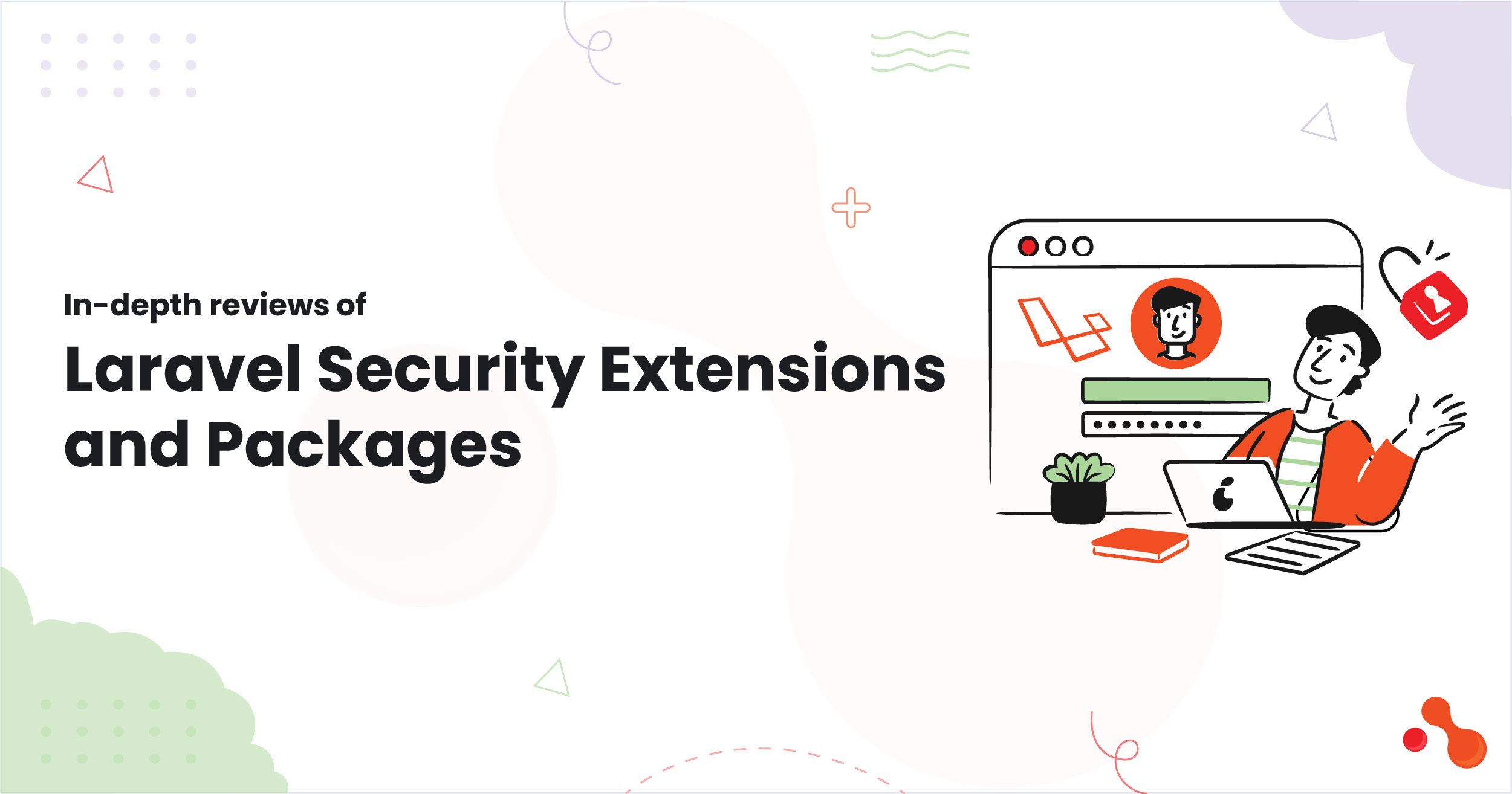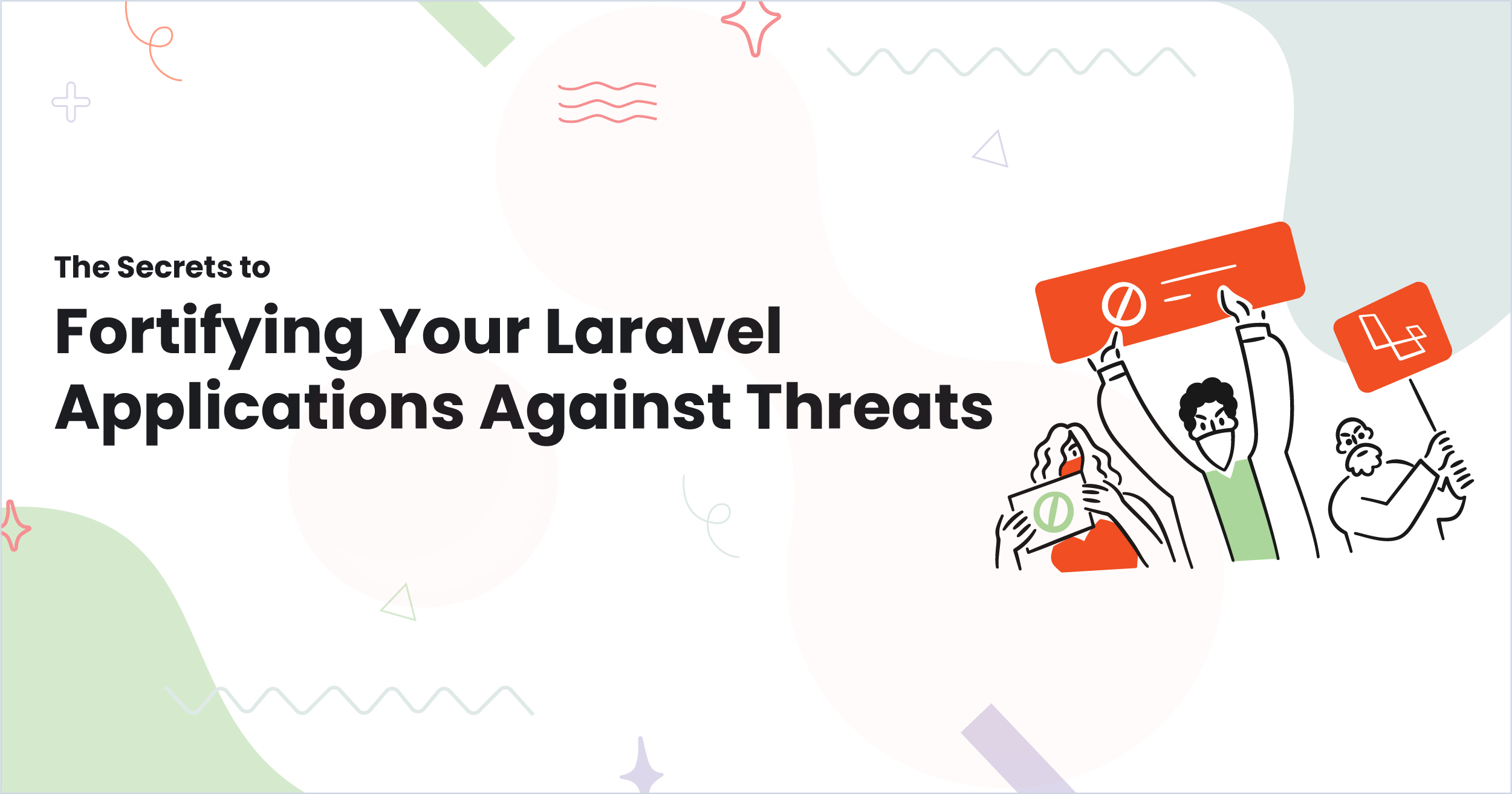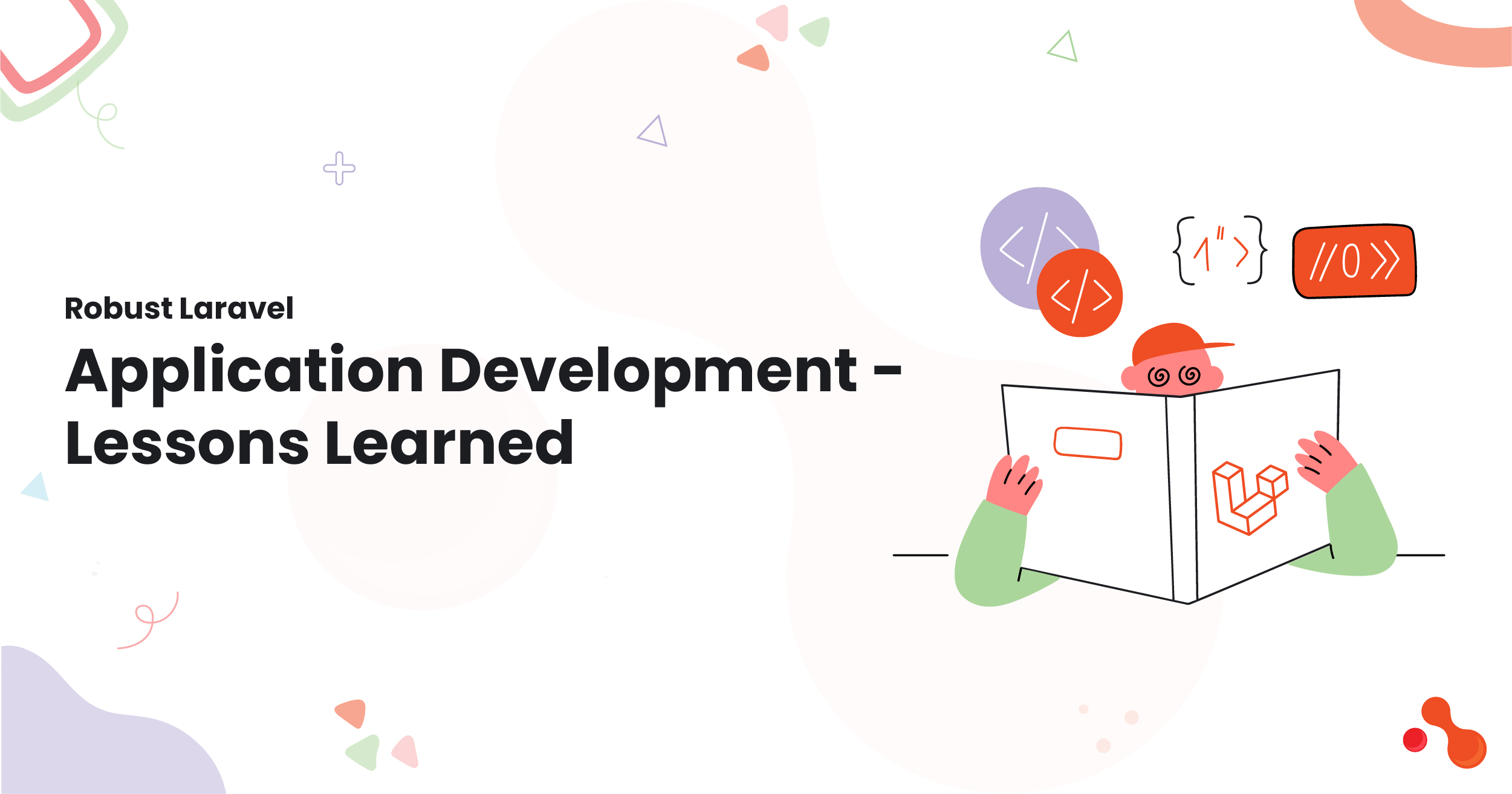
Introduction
Laravel is a widely adopted PHP framework renowned for its simplicity, flexibility, and ability to streamline the development of web applications. Given the rising frequency of cyber threats and data breaches, security remains a paramount concern in any type of application, including Laravel.
Laravel has several built-in security mechanisms as well as extensions and packages that allow one to build highly secure applications.
This article delves into the most popular and effective Laravel security extensions and packages, providing an overview of their capabilities, use cases, and implementation methods. It also covers best practices to ensure your application remains fortified against both common and advanced threats.
Laravel Development
Laravel is a feature-rich framework that has received a boost in its features list with the release of version 11. This includes many new features to make it more secure. One of the critical aspects of Laravel’s security is its authentication system, which is powerful and flexible.
Laravel extends to protecting your application from common vulnerabilities such as SQL injection, cross-site scripting (XSS), and cross-site request forgery (CSRF). Packages like Laravel Security, which is a comprehensive security package, can help safeguard your application by providing a set of tools to address these issues.
An official Laravel Partner will have the expertise to build a cutting-edge solution that is highly secure and helps boost your online presence. Acquaint Softtech is one such software development outsourcing company.
Laravel Security Extensions and Packages
Laravel Sanctum
- Overview: Laravel Sanctum is a lightweight package that allows developers to manage API tokens and user authentication via simple and secure mechanisms. One of its standout features is its ability to handle authentication of single-page applications (SPAs), mobile applications, and simple token-based APIs
- Key Features:
- API Token Authentication: Sanctum generates secure, long-lived API tokens.
- SPA Authentication: Works seamlessly with Laravel’s session authentication to protect SPAs.
- CSRF Protection: Ensures protection from Cross-Site Request Forgery attacks.
- Implementation:
- To install Laravel Sanctum, run:
bash code
composer requires laravel/sanctum
- Publish the Sanctum configuration:
bash code
php artisan vendor:publish –provider=”Laravel\Sanctum\SanctumServiceProvider”
Then, configure your sanctum.php file and use middleware to protect your routes.
- Best Use Cases:
- When you need API authentication for Laravel applications.
- When building SPAs or mobile applications with session authentication.
Laravel Passport
- Overview: Laravel Passport is a robust OAuth2 server implementation for Laravel, providing an out-of-the-box solution for API authentication. With Passport, developers can easily set up secure token-based authentication for APIs, offering more advanced features than Sanctum, such as password grant tokens, client credentials, and refresh tokens.
Key Features:
- OAuth2 Implementation: Full OAuth2 server integration with multiple grant types.
- Secure API Token Management: Securely generates and revokes access tokens.
- Scopes and Roles: Assign specific permissions to tokens using scopes.
- Refresh Tokens: Allows users to generate refresh tokens for long-term sessions.
- Implementation:
- To install Laravel Passport, use the following command:
bash code
composer require laravel/passport
After installation, run the Passport migration:
bash code
php artisan passport:install
Then, configure Passport within your auth.php file and apply the auth:api middleware to the routes you want to protect.
- Best Use Cases:
- When your Laravel application needs to implement full OAuth2 authentication.
- When working with external third-party applications that require OAuth2 integration.
- Strengths:
- Full OAuth2 Implementation: Includes everything you need for OAuth2, including personal access tokens, client credentials, and authorization codes.
- First-Party Laravel Integration: Since it’s developed by the Laravel team, Passport works seamlessly with Laravel’s existing authentication system.
- Secure API Authentication: OAuth2 is one of the most secure ways to authenticate APIs, especially in microservices or third-party applications.
- Weaknesses:
- Complexity: OAuth2 is inherently complex, and Passport’s setup reflects that complexity. It may be overkill for simpler applications.
- Overhead for Small APIs: If you don’t need full OAuth2, Laravel Sanctum may be a better choice for simpler token-based authentication.
- Rating: Powerful but may be overkill for small or internal APIs.
Laravel Fortify
- Overview: Laravel Fortify is an authentication backend for Laravel applications that provides secure mechanisms for registration, login, two-factor authentication, and more.
- Key Features:
- Password Reset: Secure password reset implementation with token validation.
- Two-Factor Authentication: Provides a built-in two-factor authentication mechanism.
- Email Verification: Supports secure email verification workflows.
- Rate Limiting: Prevents brute-force attacks through rate-limiting login attempts.
- Implementation:
- To install Laravel Fortify, run:
bash code
composer require laravel/fortify
- Publish the Fortify configuration:
bash code
php artisan vendor:publish –provider=”Laravel\Fortify\FortifyServiceProvider”
Then, define your authentication-related routes in routes/web.php.
- Best Use Cases: When building a custom frontend authentication system with secure back-end logic. For applications requiring two-factor authentication or password reset flows.
- Strengths:
- Comprehensive Authentication Features: Offers everything from login and registration to 2FA and password resets out of the box.
- Extensible: Fortify is customizable, allowing developers to adapt authentication features according to their application’s needs.
- Built-in 2FA: Provides out-of-the-box support for two-factor authentication using time-based one-time passwords (TOTP), a vital feature for modern apps.
- Weaknesses:
- Requires Additional Setup: Unlike Laravel Breeze or Jetstream, Fortify doesn’t include frontend scaffolding, so you’ll need to handle the UI separately.
- Initial Learning Curve: Customizing Fortify for advanced use cases may require a deeper understanding of Laravel’s authentication mechanisms.
Laravel Security by Fideloper
- Overview: The Laravel Security package by Fideloper helps secure your Laravel application by adding extra HTTP security headers. HTTP headers are crucial for protecting your app from common vulnerabilities like XSS, clickjacking, and content-type sniffing.
- Key Features:
- Content Security Policy (CSP): Helps mitigate XSS by controlling what resources the browser can load.
- X-Frame-Options: Prevents clickjacking by disallowing rendering of your site in an iframe.
- X-XSS-Protection: Enables browser-based XSS protection features.
- Strict-Transport-Security (HSTS): Enforces the use of HTTPS for all connections.
- Implementation:
- To install Laravel Security by Fideloper, run:
bash code
composer require fideloper/laravel-security
Then, publish the configuration and customize your headers in config/security.php.
- Best Use Cases: When securing your application against common attacks such as XSS, clickjacking, and insecure connections. For applications that require compliance with strict security protocols.
Laravel-ACL
- Overview: Access Control Lists (ACLs) provide a fine-grained security system that allows developers to define permissions and roles with precision. The Laravel-ACL package extends the framework’s capabilities, enabling you to assign multiple roles and permissions to users and control their access to different resources.
- Key Features:
- Multi-Role Support: Assigns multiple roles to users, giving them varying access rights.
- Permission System: Grants specific permissions for different roles.
- Middleware Protection: Protects routes using custom middleware based on roles and permissions.
- Implementation:
- To install Laravel-ACL, run:
bash code
composer require kodeine/laravel-acl
Once installed, run the necessary migrations to set up the roles and permissions tables.
- Best Use Cases:
When you need a flexible role-based access control system in your Laravel app.
For applications with multiple user roles and complex access requirements.
Spatie Laravel Permission
- Overview: Spatie Laravel Permission is one of the most widely-used packages for managing roles and permissions in Laravel.
- Key Features:
- Role-Based Permissions: Easily assign roles to users and manage access control.
- Permission Middleware: Apply permission-based middleware to protect routes.
- Custom Guards: Define custom guards for different user types (e.g., admin, user, etc.).
- Database-Backed Permissions: Store roles and permissions in the database for easy management.
- Implementation:
- To install Spatie Laravel Permission, run:
bash code
composer require spatie/laravel-permission
Then, publish the configuration file and run migrations:
bash code
php artisan vendor:publish –provider=”Spatie\Permission\PermissionServiceProvider”
php artisan migrate
Define roles and permissions in your application logic, and use the package’s middleware to protect routes.
- Best Use Cases:
When you need to manage roles and permissions in a multi-user application.
For applications requiring fine-grained control over user actions.
Laravel Shield
- Overview: Laravel Shield is a security-focused package that automatically configures various security headers and authentication protocols for your Laravel application.
- Key Features:
- Secure Authentication: Provides enhanced security for user authentication.
- Security Headers: Automatically configures headers like Content-Security-Policy and Strict-Transport-Security.
- CSRF Protection: Ensures that CSRF tokens are implemented across the application.
- HTTP Method Spoofing Protection: Prevents attackers from using HTTP method spoofing to bypass access control.
- Implementation:
- To install Laravel Shield, run:
bash code
composer require laravolt/laravel-shield
The package automatically applies security headers, but you can also configure it further by adjusting the provided options in the config/shield.php file.
- Best Use Cases: For applications that require out-of-the-box protection against common web vulnerabilities. For developers looking to automate security configurations.
- Laravel Honeypot
- Overview: Laravel Honeypot is a simple yet effective package designed to prevent bots from submitting forms by utilizing honeypot fields. Honeypot fields are hidden from human users but visible to bots, which fill them and are then blocked from submitting forms.
Key Features:
- Bot Detection: Prevents spam bots from submitting forms.
- Invisible Fields: Uses hidden form fields to trap bots while remaining invisible to real users.
- Configurable Time Traps: Sets a minimum amount of time that a form should take to be filled out, further thwarting bots.
- Implementation:
- To install Laravel Honeypot, run:
bash code
composer require spatie/laravel-honeypot
- Publish the configuration file:
bash code
php artisan vendor:publish –provider=”Spatie\Honeypot\HoneypotServiceProvider”
Apply the honeypot protection to your forms by adding the honeypot and timer fields.
- Best Use Cases: For applications with public-facing forms that are frequently targeted by spambots. When you want an unobtrusive way to prevent automated form submissions without the need for CAPTCHAs.
Laravel Security Checker
- Overview: The Laravel Security Checker package scans your Laravel project for vulnerabilities in its dependencies. It checks for known security issues in the packages listed in your composer.lock file and alerts you if any of the installed packages have security vulnerabilities.
- Key Features:
- Automated Security Scans: Scans all Composer dependencies for known vulnerabilities.
- Detailed Reporting: Provides detailed reports on any vulnerabilities found.
- Integration with CI/CD Pipelines: This can be integrated into your continuous integration pipeline to automate security checks.
- Implementation:
- To install Laravel Security Checker, run:
bash code
composer require enlightn/security-checker –dev
- You can then run the security scan with:
bash code
php artisan security:check
- The package will provide a report on any detected vulnerabilities.
- Best Use Cases:
- When maintaining Laravel projects with multiple third-party packages.
- For ensuring that your Laravel application‘s dependencies remain secure over time.
Enso Security
- Overview: Laravel Enso is a package designed to provide a modern architecture for Laravel applications, with a focus on scalability and security.
- Implementation: Laravel Enso has a more complex setup process compared to other packages, as it requires the installation of several modules. Follow the official documentation for detailed installation instructions.
- Best Use Cases: For large a Laravel application that requires both security and scalability. When building enterprise-level Laravel applications with complex permission structures.
Laravel Permissions
- Overview: Provides role-based access control (RBAC) for Laravel applications, making it easier to manage user permissions and roles.
Strengths:
- Granular Permissions: Allows for detailed control over who can perform which actions in your application.
- Easy to Use: Spatie’s permission system integrates smoothly into Laravel’s authentication system, making it intuitive to assign roles and permissions.
- Highly Customizable: The package is flexible and works well with different user models and guards.
- Weaknesses:
- Potential Performance Issues: For larger applications with many roles and permissions, there could be performance overhead when checking permissions frequently.
- Advanced Features Require Setup: Some advanced permission checks require custom implementation.
- Best Use Cases:
- Applications requiring fine-grained user roles and permission management, such as multi-tenant applications or apps with multiple user types.
- Corporate applications where permissions need to be carefully controlled.
- Integration Tips:
- Optimize permission checks by caching them if your application has a large user base.
- Ensure permissions are well-documented and regularly audited for security purposes.
- Rating: Excellent for managing roles and permissions, but watch out for performance in large-scale applications.
Laravel Security by Enrise
- Purpose: A comprehensive security package to help secure various aspects of a Laravel application, like XSS prevention, SQL injection protection, and more.
Key Features:
- Automatic input sanitization.
- XSS protection using a secure encoding strategy.
- Advanced SQL injection prevention.
- Installation: composer require enrise/laravel-security
Strengths:
- Input Sanitization: Automatically cleans user input, which helps prevent XSS attacks.
- SQL Injection Prevention: By escaping input and leveraging Laravel’s built-in ORM (Eloquent), this package reduces the likelihood of SQL injection.
- Proactive Security: Provides a catch-all approach for common vulnerabilities like XSS and SQL injection.
Weaknesses:
- Complexity: Some users find it a bit complicated to configure compared to other packages.
- Performance Impact: Automatic sanitization can cause some performance overhead, especially for large applications.
Security Headers
- Purpose: This package helps set essential HTTP security headers for your Laravel application to reduce the risk of attacks.
- Key Features: Adds headers like Content-Security-Policy, Strict-Transport-Security, X-Frame-Options, and others. Improves protection against clickjacking, XSS, and other injection attacks.
- Installation: composer require bepsvpt/secure-headers
Firewall
- Purpose: Provides IP-based firewall control for Laravel applications. Useful for blocking or allowing traffic from specific IPs.
- Key Features: Customizable firewall rules. Ability to block entire IP ranges or countries. White-listing and black-listing of IPs.
- Installation: composer require pragmarx/firewall
Spatie Laravel SSL Certificate
- Purpose: This package checks whether your site’s SSL certificate is still valid and alerts you if it’s about to expire.
- Key Features:
- Automatically monitors SSL certificates.
- Send notifications before the certificate expires.
- Installation: composer require spatie/laravel-ssl-certificate
Laravel CSP (Content Security Policy)
- Purpose: A package for managing the Content Security Policy (CSP) headers in Laravel applications, enhancing protection against XSS and data injection attacks.
Key Features:
- Configurable CSP headers for various environments.
- Flexible policies to restrict sources of JavaScript, CSS, and images.
- Reduces the risk of cross-site scripting (XSS) attacks.
- Installation: composer require spatie/laravel-csp
Laravel Auditor
- Purpose: This package allows you to audit and log changes made to your application’s database, helping track data modifications for security purposes.
Key Features:
- Logs user actions like create, update, and delete in the database.
- Provides an audit trail to review changes and identify potential breaches.
- Installation: composer require owen-it/laravel-auditing
Hire Laravel Developers
A professional Laravel development company will have the expertise and experience to develop secure applications. Acquaint Softtech is one such firm. We have over 10 years of experience developing cutting-edge solutions and ensuring high security.
Hire remote developers from here to gain the upper edge over your competitors. We have a dedicated team of Laravel developers and a dedicated QA team to ensure the delivery of flawless applications.
Conclusion
Securing Laravel applications is a critical component of responsible web development. While Laravel offers a range of built-in security features, such as CSRF protection, password hashing, and route middleware, third-party extensions and packages can further enhance security, especially in complex applications with multiple user roles, public-facing forms, and API integrations.
Adopt the security tools of Laravel to ensure your applications remain secure in the face of evolving cyber threats. Take advantage of the Laravel development services Acquaint Softtech has to offer. We help protect both user data and business operations.
In a world where security breaches are increasingly common, taking proactive measures to secure your Laravel application is not just wise but essential. By leveraging these extensions and packages, you can protect your application, your users, and your reputation from potential security risks.

